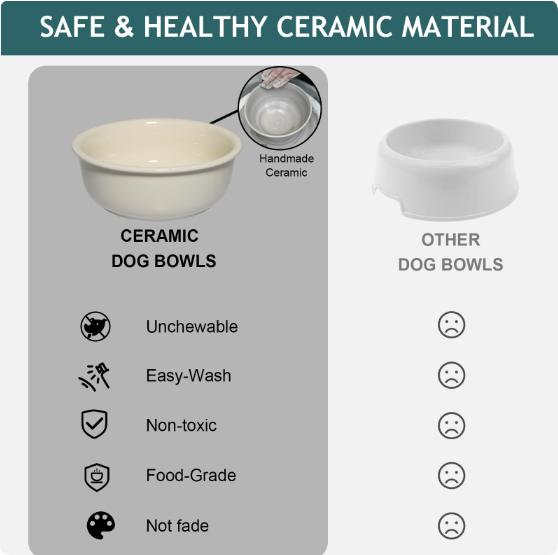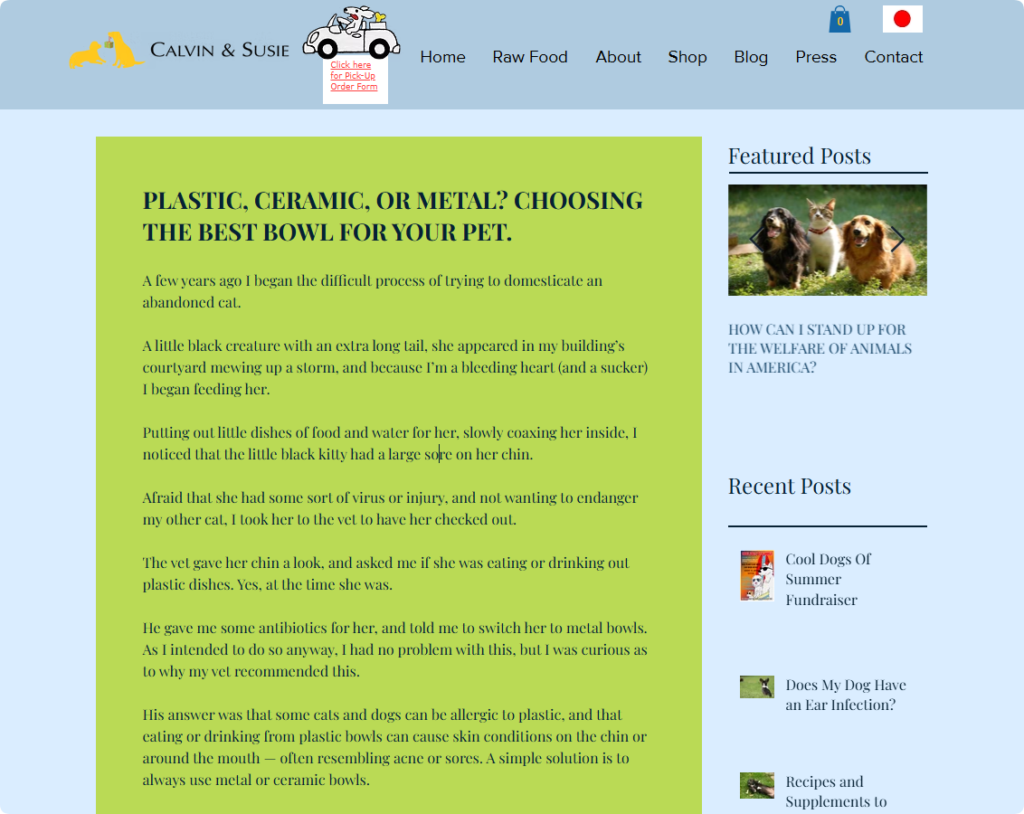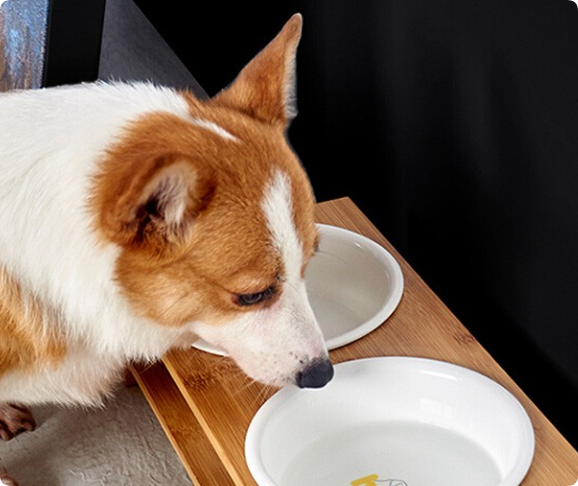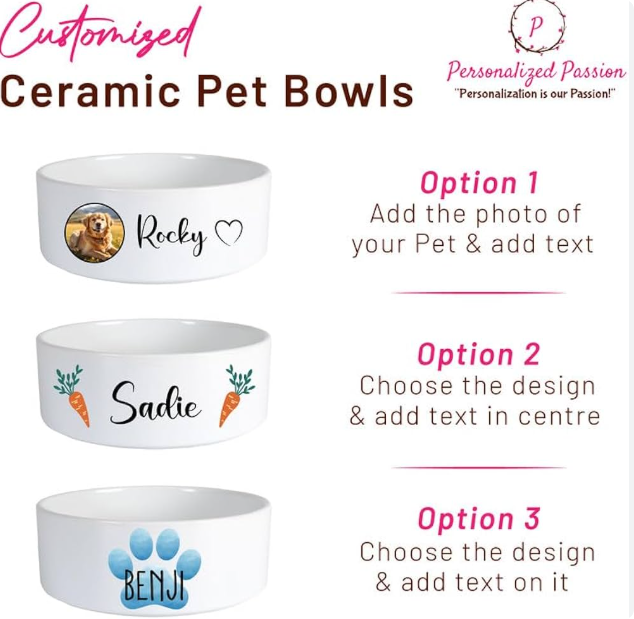Introduction
Choosing the right bowl for your pet is crucial, as the material directly affects your dog’s health, dining experience, and household cleanliness. Among the available options—plastic, stainless steel, and ceramic—ceramic bowls have gained significant popularity due to their unique advantages. This article dives deep into the benefits of ceramic pet bowls, providing a comparative analysis to help you make the best decision for your furry friend.
Comprehensive Advantages of Ceramic Pet Bowls

1. Exceptional Hygiene
Ceramic pet bowls are crafted through a firing process, resulting in a smooth, non-porous surface that does not absorb liquids or food residues. Key hygiene benefits include:
- Anti-Bacterial and Mold-Resistant: The seamless surface prevents bacteria from adhering or growing.
- Odor-Free: Unlike plastic bowls, ceramic bowls do not retain the smell of dog food over time.
- Health Protection: Reduced bacterial contamination minimizes the risk of gastrointestinal issues in pets.
2. Durable and Aesthetic
Although moderately heavy, ceramic bowls are highly durable. EKA ceramic bowls are fired at high temperatures, making them scratch-resistant and long-lasting. Additionally, ceramic bowls are often designed in stylish patterns, blending functionality with home décor.
3. Safe Materials
Food-grade ceramic surfaces are coated with non-toxic glazes, free from harmful chemicals like BPA or phthalates commonly found in plastic products. This makes ceramic bowls especially suitable for dogs that tend to lick or spend extended periods eating.
4. Designed for Dog Dining Habits
The weight of ceramic pet bowls prevents them from being easily knocked over or moved. Manufacturers can also customize ceramic bowls to cater to various needs, such as:
- Slow Feeder Bowls: Internal partitions slow down eating, helping to prevent bloating and digestive issues.
- Anti-Slip Design: Silicone pads on the bottom enhance stability further.
5. Eco-Friendly and Sustainable
Unlike plastic products, ceramic bowls are environmentally friendly. Made from natural materials like kaolin and quartz, ceramic bowls have a long lifespan and reduce waste. Moreover, broken ceramic bowls can be recycled, aligning with sustainability goals.
Comparative Analysis: Ceramic vs. Plastic vs. Stainless Steel
| Feature | Ceramic Bowls | Plastic Bowls | Stainless Steel Bowls |
|---|---|---|---|
| Hygiene | Smooth surface, resists bacteria | Prone to scratches, traps bacteria | Hygienic but prone to water spots |
| Durability | Durable, high-temperature fired | Easily damaged, short lifespan | Long-lasting but can scratch over time |
| Weight & Stability | Heavy, hard to tip over | Lightweight, easy to move/tip | Lightweight, requires anti-slip mats |
| Design Variety | Stylish and customizable | Simple, less aesthetically pleasing | Functional, often lacks visual appeal |
| Eco-Friendliness | Highly sustainable and recyclable | Non-biodegradable, microplastic pollution | Recyclable but energy-intensive production |
| Price | Mid to high, matches quality | Low, budget-friendly | Moderate but high-end brands can be costly |
PLASTIC, CERAMIC, OR METAL? CHOOSING THE BEST BOWL FOR YOUR PET.

Scenarios and Buying Guide for Ceramic Pet Bowls
Needs Analysis for Different Dogs
Selecting the right ceramic bowl for your pet depends on factors like size, age, and eating habits.
- Small Dogs or Puppies
- Opt for shallow bowls to make eating and drinking easier.
- Choose lightweight options to minimize strain on their neck.
- Large or Adult Dogs
- Deep or large-capacity bowls accommodate bigger portions.
- Heavier bowls prevent tipping during vigorous feeding.
- Senior or Special Needs Dogs
- Raised or tilted bowls reduce strain on joints and neck.
- Soft-edged ceramic designs are ideal for dogs with dental issues.

What to Look for When Buying Ceramic Pet Bowls
- High-Quality Brands: Ensure the glaze and materials are food-grade certified.
- Certifications: Look for FDA, CE, or similar safety certifications.
- Regular Maintenance: Inspect for cracks to prevent bacterial buildup.
User Feedback and Market Trends
User Feedback
- A pet owner shared: “After switching to a ceramic bowl, my dog’s skin issues significantly improved, likely due to reduced exposure to allergens from plastic bowls.”
- Another owner with three large dogs said: “The stability of ceramic bowls is fantastic. Unlike plastic bowls, they stay in place and are easier to clean.”
Market Trends
According to reports on the global pet supplies market, demand for ceramic pet bowls has steadily increased over the past three years.
- Eco-conscious consumers are shifting towards natural, non-toxic ceramic options.
- Personalized ceramic bowls with pet names or unique patterns have become a popular trend.

Why Choose EKA Ceramic Pet Bowls
1. Experienced Manufacturer
EKA specializes in ceramic tableware production and has years of global export experience. Our products cater to home, kitchen, and pet supply markets.
2. Premium Quality Assurance
EKA ceramic pet bowls are crafted from natural materials and non-toxic glazes, fired at high temperatures to meet international standards.
3. OEM/ODM Services
EKA offers flexible customization options, supporting bulk production and tailored designs for brand retailers and cross-border e-commerce sellers.
4. Commitment to Sustainability
We adopt eco-friendly production processes, minimizing carbon emissions and energy consumption to support global environmental efforts.
Conclusion
Ceramic pet bowls stand out as the best choice for dogs due to their hygiene, safety, eco-friendliness, and aesthetic appeal. Investing in a high-quality ceramic bowl not only ensures your pet’s health but also enhances your living environment. If you are looking for a reliable supplier of ceramic pet bowls, EKA is your ideal partner. Contact us today to learn more about our products and collaboration opportunities.

